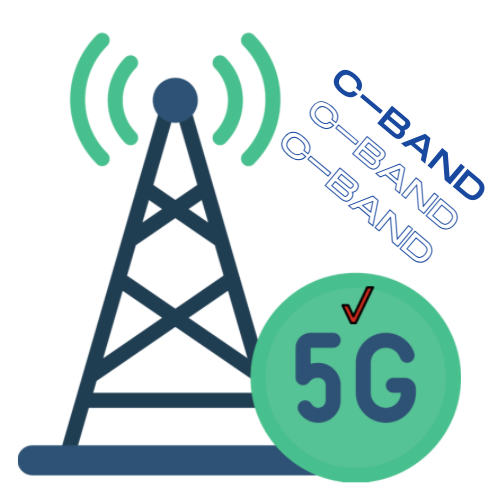In the past, we’ve discussed the technical factors surrounding 5G, such as frequency bands and the airwaves at which 5G operates (low, mid, and high). But what about the different terminology used by cellular providers and those 5G icons on your phone that indicate your cell phone’s signal strength? If you’ve wondered what those 5G, 5G Ultra Wideband, 5G Ultra Capacity, 5G Plus, and 5G C-Band symbols mean on your phone, you’re not alone. This is often a lot of confusion surrounding these 5G symbols. 5Gstore is here to explain exactly what they mean. Read on — this article will discuss the meaning behind 5G, 5GUW/UWB, 5GUC, and 5G C-Band symbols.
What is 5G?
When you hear 5G, you may think of the hype that surrounded its rollout in 2018, 2019, and 2020. Today, about 90% of America’s population has 5G available. Even if you’re in the 10% of the country that doesn’t yet offer 5G in your location, your smartphone is likely 5G-compatible and you have experienced 5G speeds in some capacity at a certain point.
The 5G signal strength is what providers like to call “5G Nationwide.” 5G is currently the most widely available service in America. Theoretically, 5G has the potential for 10 Gbps speeds; in reality 5G alone is similar to 4G LTE speeds. 5G service may provide you with enough speed to watch a high definition or 4K video; however, it may not be fast enough to handle multiple streams at the same time.
What is 5G Ultra Wideband?
This is where 5G Ultra Wideband comes in. As Verizon’s highest-performing 5G, 5G Ultra Wideband (5G UW) can be up to 10x faster than 4G LTE. This makes it capable of handling multiple audio or video streams simultaneously. T-Mobile® and AT&T have similar 5G networks. T-Mobile calls this signal “Ultra Capacity,” or “5G UC.” AT&T calls it “5G Plus.”
What is C-Band?
You may also encounter “C-Band,” which is part of Verizon’s Ultra Wideband network. C-Band simply operates in a different section of 5G and is one of the newest types of 5G. It can be extremely fast and can support large amounts of data. C-Band is currently not widely available due to its limited range.
5G Symbols
So what does that 5G symbol on your phone mean? 5G devices will display specific 5G icons connected to 5G Nationwide. These devices include those connected to Verizon, AT&T, and T-Mobile networks:
- T-Mobile: T-Mobile’s Ultra Capacity network may display a “5G UC” symbol. A 5G icon without the “UC” indicates that you’re connected to a slower 5G network. This is what T-Mobile refers to as “Extended Range.”
- Verizon: Verizon will show 5G UW (or 5G UWB) when connected to 5G Ultra Wideband. C-Band does not have its own indicator, so it falls under 5G UW for Verizon (or 5G+ for AT&T).
- AT&T: AT&T icons may display “5GE,” which is actually 4G LTE. AT&T simply got creative with their advertising in 2020 and came out with “5G Evolution.” 5G Evolution is supposed to be faster than traditional LTE, but its speeds are not quite as fast as you might expect from 5G. Unfortunately, it still appears on some phones.
What to Look For on Your Phone
Note that not all phones are alike. For that reason, how they display their network details might differ slightly. Take a look below at some common examples.
5G: This is simply 5G service. This 5G icon applies to all providers.
5GE: 5G Evolution is 4G LTE on the AT&T network.
5G+: 5G Plus is AT&T’s faster 5G service, and includes C-Band.
5G UW/ UWB: 5G Ultra Wideband is Verizon’s fastest 5G service.
5G UC: 5G Ultra Capacity is T-Mobile’s fastest 5G service available.



